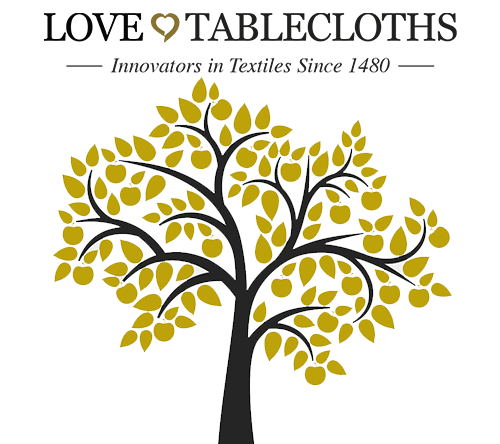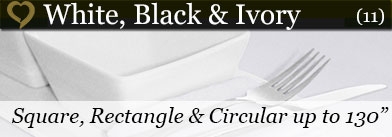Generations In Textiles Since 1480
Generations in Textiles for 500 years - Since 1480 (Plus Family Tree PDF)
The Hargreaves heritage goes back over 500 years to 1480 when Christopher and Jennet Hargreaves were handloom weavers at High Riley in nearby Accrington.
In 1604 another Christopher married Elizabeth Nutter the niece of famous Lancashire Pendle Witch Alice Nutter who was hanged at Lancaster Castle.
In the early years as the local farmer in order to supplement their income, started to sell raw cotton to the local handloom weavers – the weavers would take the raw cotton home to spin and weave into a piece of calico cloth which they would carry over their shoulder on the way back to the farm.
The farmer would buy the piece of cloth and send it by pack horse to Manchester, where it would be sold to the cloth merchants – the handloom weaver would buy more raw cotton and the whole process would be repeated again and again.
The handloom weavers in 1700 would live in a single room cottage where they would eat, work and sleep. The wife would usually spin and the husband would weave – conditions were sparse and it was quite normal for the family to sleep six in a bed – jambons and oatcakes would hang from the ceiling and the room would be heated by a coal fired hearth. Although the handloom weavers appeared to live under Spartan conditions, they were in fact quite affluent and earned £1 a week.
James Hargreaves the inventor of the Spinning Jenny an ancestor of the present family, resulted in the beginning of the Industrial Revolution. Previously it took eight spinners to keep one weaver going, but with Hargreaves’ invention, yarn became more plentiful and saw the start of the factory system. The handloom weavers’ wages dropped from £1 to 5 shillings per week, and as a result of this riots and loom breaking took place. In 1826, twenty-six looms were smashed by the mob and the company received £249 in compensation. There is a model of Hargreaves and his Spinning Jenny on display in the Textile Museum at the Mill.
Later generations of Hargreaves pawned their family bible to buy bread for their families but eventually established a spinning and weaving business at Moscow Mill in Oswaldtwistle. In 1851 there were 597 employees at the mill made up of 127 men, 239 women 120 girls and 62 boys and in 1891 the mill was equipped with 48,000 spindles and 1074 looms.
Weaving has been carried out at Moscow Mill since 1874 – Despite all the problems associated with the Textile Industry it had run continuously without a break. In 1991 the recession and cheap imports had taken their toll and the company had to close down two weaving sheds with older Shuttle Looms and concentrate on the modern weaving shed which eventually closed in 2002 bringing to an end 177 years of textile manufacturing at the mill. The company was left with 100.000 sq. ft. of empty buildings and had to think of something to fill them again and Oswaldtwistle Mills was created in 1992.
The main canteen was changed into a coffee shop and the mill grounds were landscaped and the lodges converted to a wildlife reserve and the tradition of textiles has continued as Love Tablecloths.
Today the business is owned and run by the Hargreaves family.
Click Here To View The Hargreaves Family Tree (PDF)
Love Tablecloths by Oswaldtwistle Mills Ltd
Specializing in tablecloths, sourcing fabrics from around the globe with cutting and sewing facilities in Lancashire.
The Elegance of Hospitality: The Tablecloth as a Symbol of Welcome
Hospitality is a timeless virtue that transcends cultures and eras. It embodies the art of welcoming guests, making them feel comfortable, and creating an atmosphere of warmth and togetherness. In the realm of hospitality, the tablecloth stands as a symbol of grace and elegance, playing a pivotal role in setting the stage for memorable gatherings. This essay explores the significance of the tablecloth in hospitality, its evolution over time, and the cultural aspects associated with it.
The Historical Evolution of the Tablecloth
The use of tablecloths in hospitality dates back to ancient civilizations. In ancient Egypt, for example, they were made from linen and used to cover tables during feasts and gatherings. The tradition of using tablecloths then spread to ancient Greece and Rome, where they were often richly adorned and symbolized the wealth and status of the host. The Middle Ages saw the emergence of intricately woven and embroidered tablecloths, showcasing craftsmanship and luxury. As time passed, tablecloths evolved in terms of materials, designs, and purposes, becoming an integral part of hospitality worldwide.
The Symbolism of the Tablecloth
- **Warmth and Welcome**: A tablecloth draped over a dining table instantly conveys a sense of warmth and welcome. It invites guests to sit down, relax, and enjoy the company of their hosts. The act of laying a tablecloth suggests that a meal is an occasion, not just a routine.
- **Elegance and Style**: Tablecloths come in various colours, patterns, and fabrics, allowing hosts to express their personal style and set the tone for the gathering. Whether it's a crisp white linen cloth for a formal dinner or a vibrant, patterned cloth for a casual brunch, the choice of tablecloth reflects the host's taste and the occasion's ambiance.
- **Hygiene and Practicality**: Beyond aesthetics, tablecloths serve a practical purpose in hospitality. They protect the dining surface from spills and stains, making clean-up easier. This practicality is especially important when hosting events with many guests, such as weddings or banquets.
- **Cultural Significance**: Tablecloths often carry cultural significance. In some cultures, specific colours or patterns may be associated with celebrations or rituals. For example, red tablecloths are common in Chinese culture during the Lunar New Year, symbolizing good luck and happiness.
Cultural Variations
Different cultures have unique customs and preferences when it comes to tablecloths. In some Mediterranean countries, such as Italy and Greece, it's common to use white or light-coloured tablecloths, reflecting the region's warm climate and love for simplicity. Meanwhile, in Northern Europe, tablecloths are frequently patterned and made of thicker fabrics to combat the colder climate.
In Middle Eastern cultures, hospitality is highly esteemed, and elaborate tablecloths often accompany lavish feasts. These tablecloths are often adorned with intricate patterns and embroidery, showcasing the host's dedication to their guests' comfort.
The tablecloth, a seemingly simple piece of fabric, carries profound symbolism in the world of hospitality. It transcends time and culture, serving as a universal symbol of warmth, elegance, and welcome. Its historical evolution, from ancient civilizations to modern society, demonstrates its enduring importance. The choice of tablecloth reflects not only the practical needs of hosting but also the host's personal style and cultural background. In essence, the tablecloth is a silent yet powerful storyteller in the world of hospitality, enhancing the dining experience and creating lasting memories of shared moments.
The Rise of Polyester Tablecloths: A Shift from Cotton
Tablecloths have long been an essential element in decorating tables for various occasions, from formal dinners to casual gatherings. While cotton tablecloths have been a traditional choice for many years, there has been a notable shift in popularity towards polyester tablecloths in recent times. This essay explores the reasons behind the growing preference for polyester tablecloths over cotton tablecloths.
- Cost-Effective Alternative
One of the primary reasons for the rising popularity of polyester tablecloths is their cost-effectiveness. Polyester, a synthetic fabric, is generally less expensive to produce and purchase compared to cotton. This affordability makes it an attractive option for both individuals and businesses looking to decorate tables without breaking the bank.
- Durability and Longevity
Polyester tablecloths are known for their durability and longevity. Unlike cotton, which can be prone to fading, tearing, and wrinkles, polyester is a robust and resilient material. It is highly resistant to stains, making it an ideal choice for events where spills are common. The longevity of polyester tablecloths ensures that they can be reused multiple times, further enhancing their cost-effectiveness.
- Low Maintenance
Polyester tablecloths are relatively low maintenance compared to their cotton counterparts. They are less prone to wrinkling, which means they require minimal ironing or steaming. Additionally, polyester is a quick-drying fabric, making it easy to clean and reuse in a short amount of time. This ease of care appeals to both event planners and individuals who appreciate convenience.
- Versatility in Design
Polyester tablecloths offer a wide range of design options. They can be easily dyed and printed with various patterns and colours, allowing for greater customization and versatility. This flexibility in design makes polyester tablecloths suitable for a diverse range of events, from weddings and corporate gatherings to casual family dinners.
- Resistance to Allergens
Polyester is a hypoallergenic material that is less likely to trigger allergies compared to cotton, which can accumulate dust mites and other allergens over time. This characteristic makes polyester tablecloths a safer choice for individuals with allergies or sensitivities.
- Environmental Considerations
While cotton is a natural fibre, the production of cotton textiles can have a significant environmental impact due to water and pesticide usage. Polyester, on the other hand, is a synthetic fiber, and many polyester tablecloths are made from recycled materials, reducing their environmental footprint. As environmental consciousness grows, the eco-friendly aspect of polyester is gaining traction among consumers.
- Availability and Accessibility
Polyester tablecloths have become more widely available and accessible in recent years. They are readily found in various sizes, colours, and designs at a range of retailers, from local stores to online marketplaces. This accessibility makes it easier for consumers to find the perfect tablecloth for their needs.
Polyester tablecloths have gained popularity over cotton tablecloths due to their cost-effectiveness, durability, low maintenance, versatility in design, allergen resistance, and environmental considerations. This shift reflects changing consumer preferences and the need for practical, budget-friendly, and eco-friendly options in the modern world. While cotton tablecloths will always have their place, the rise of polyester tablecloths demonstrates the adaptability of the textile industry in meeting evolving demands.
The Versatile Appeal of Textured Polyester Tablecloths: A Cotton-Like Experience
The world of textiles has witnessed remarkable advancements in recent years, offering a wide array of options to consumers. Among these, textured polyester tablecloths have gained prominence due to their uncanny ability to replicate the feel of cotton tablecloths. In this essay, we will explore the attributes that make textured polyester tablecloths a preferred choice, examining their texture, durability, affordability, and eco-friendliness.
Texture Resembling Cotton
One of the most remarkable features of textured polyester tablecloths is their ability to mimic the soft and inviting texture of cotton. Cotton has long been associated with comfort and warmth, making it a popular choice for tablecloths. However, textured polyester manages to capture the essence of cotton without the associated drawbacks, such as wrinkling and shrinking. The tactile experience of a textured polyester tablecloth is inviting, making it an excellent choice for both casual and formal settings.
Durability Beyond Cotton
While cotton tablecloths have their merits, they are often criticized for their susceptibility to wear and tear. In contrast, textured polyester tablecloths excel in terms of durability. Polyester fibers are inherently resistant to stains and creases, ensuring that your tablecloth remains in pristine condition even after multiple uses and washes. This durability is especially valuable for households and businesses seeking long-lasting, cost-effective solutions.
Affordability Without Compromise
A significant advantage of textured polyester tablecloths over their cotton counterparts is their affordability. Cotton tablecloths, due to the expense associated with growing and processing cotton, can be considerably pricier. Textured polyester offers an economically viable alternative without compromising on quality. It allows individuals and establishments to achieve an upscale, cotton-like appearance at a fraction of the cost.
Eco-Friendly Considerations
The environmental impact of textiles is a growing concern in today's world. Cotton cultivation, although natural, often involves extensive water and pesticide usage. On the other hand, polyester is derived from petrochemicals, which raises concerns about its eco-friendliness. However, advancements in recycling and sustainable manufacturing processes have led to the production of eco-friendly polyester fabrics. Recycled polyester (rPET) is a notable example, reducing the demand for new petrochemical resources. While both cotton and polyester have their environmental drawbacks, conscientious consumers can choose eco-friendly options in either category.
In conclusion, textured polyester tablecloths offer a compelling alternative to traditional cotton tablecloths, providing a texture that feels remarkably similar to cotton while surpassing it in terms of durability and affordability. Moreover, as eco-friendly options become more prevalent, concerns about the environmental impact of polyester are being addressed. When making choices for table linens, consumers now have the opportunity to select a fabric that not only meets their aesthetic and functional needs but also aligns with their environmental values. Textured polyester tablecloths are a testament to the adaptability and innovation of the textile industry, catering to a diverse range of preferences and requirements. Whether for home or professional use, these tablecloths have secured their place as a versatile and comfortable choice.
Advantages of Using Polyester Tablecloths over Cotton Tablecloths
Tablecloths are essential accessories for enhancing the aesthetics of dining tables and protecting them from spills and stains. When it comes to choosing the right material for tablecloths, polyester and cotton are two popular options. While both have their merits, this essay aims to highlight the advantages of using polyester tablecloths over cotton ones.
- Durability
Polyester tablecloths are renowned for their exceptional durability. Unlike cotton, which tends to wear out and fade with repeated use and washing, polyester retains its colour, shape, and overall quality over time. This durability is particularly advantageous in settings where tablecloths are used frequently, such as restaurants, hotels, and event venues. Polyester tablecloths can withstand constant washing and maintain their appearance, making them a cost-effective choice in the long run.
- Wrinkle Resistance
Polyester tablecloths have a natural resistance to wrinkles, creases, and folds. They retain their smooth and crisp appearance even after being stored for extended periods. This characteristic eliminates the need for time-consuming ironing or steaming, saving both time and effort, especially in busy hospitality and event industries. Cotton tablecloths, on the other hand, are prone to wrinkles and often require more maintenance to keep them looking presentable.
- Stain Resistance
Polyester is inherently more resistant to stains than cotton. Polyester fibres are less porous, which means they are less likely to absorb liquids and food spills. This stain resistance makes polyester tablecloths an ideal choice for settings where spills are common, such as restaurants, banquet halls, and households with young children. Additionally, polyester tablecloths are often treated with stain-repellent coatings, further enhancing their ability to repel stains.
- Colourfastness
Polyester tablecloths are known for their excellent colour retention. They are less susceptible to fading, even when exposed to sunlight or frequent washing. This means that polyester tablecloths maintain their vibrant and attractive colours for a more extended period compared to cotton tablecloths, which may fade over time with exposure to UV rays and repeated laundering.
- Versatility
Polyester tablecloths come in a wide range of colors, patterns, and textures, allowing for greater versatility in table setting and decoration. Whether you're planning a formal dinner, a casual brunch, or a themed event, you can find polyester tablecloths that match your style and requirements. Cotton tablecloths, while available in various designs, may not offer the same extensive options and may require more maintenance to keep them looking pristine.
In conclusion, the advantages of using polyester tablecloths over cotton tablecloths are clear and compelling. Polyester tablecloths offer superior durability, wrinkle resistance, stain resistance, colourfastness, and versatility. These qualities make them a practical and cost-effective choice for a wide range of settings, from restaurants and hotels to homes and event venues. While cotton tablecloths have their own appeal, polyester's resilience and ease of maintenance make it the preferred option for many individuals and businesses seeking both functionality and aesthetic appeal in their table settings.


















